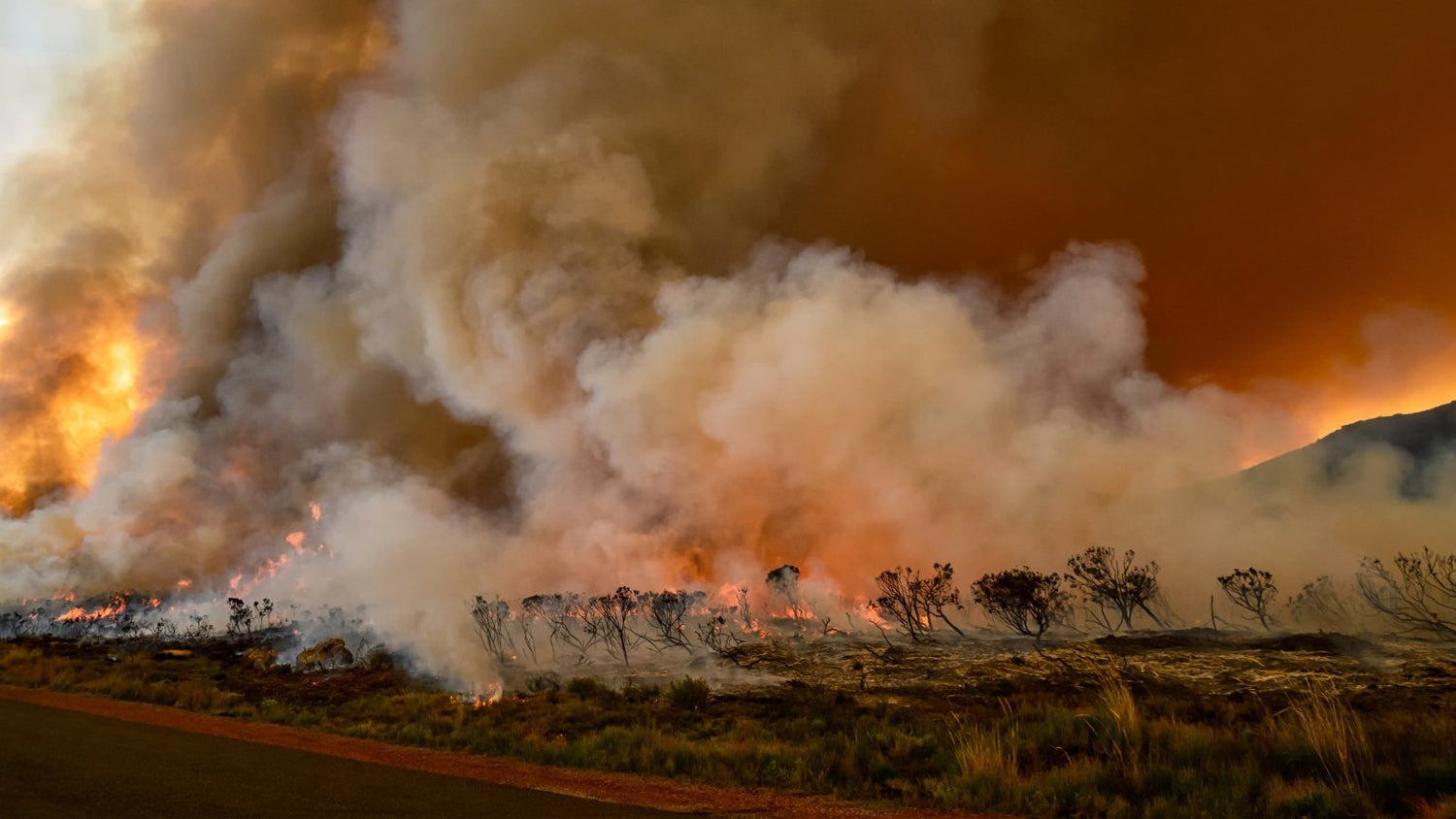Understanding the Impact of Wildfires on Air Quality and Your Health
and how having a respirator mask can help protect you
In a previous post, we talked about the air quality index, and one of the biggest contributors to poor air quality is wildfires. While wildfires occur every year, 2025 has already seen some especially impactful fires.
As of August 21, 2025, the National Interagency Fire Center reports 49 large wildfires actively burning across the U.S., with a staggering 874,677 acres consumed so far epa.govnifc.gov. Notable among these is the Dragon Bravo Fire burning at the Grand Canyon, which has engulfed 145,489 acres and stands as the largest wildfire in the U.S. this year en.wikipedia.org+2drought.gov+2. California’s Gifford Fire, now nearly contained at 95%, has scorched 131,589 acres, making it the third-largest fire of the season en.wikipedia.org+2drought.gov+2.
Wildfires impact air quality by relasing a wide range of pollutants and particulate matter into the atmosphere. This is why it’s important for anyone that may be outdoors to keep a respirator mask or gas mask in their go-bag.
What are some common pollutants released from wildfires?
Wildfires release air pollutants such as particulate matter (PM) emissions, smoke and haze, carbon monoxide (CO) and volatile organic compounds (VOCs), nitrogen oxides (NOx), and chemical pollutants.
These pollutants cause an array of issues on people’s every day life including their regional and long-distance transport, climate implications, and health impacts.
How do airborne pollutants from wildfires affect your health?
Particulate matter emissions from wildfires produce large quantities of fine particulate matter (PM2.5 and PM10), which are tiny airborne particles that can penetrate deep into the respiratory system when inhaled. These particles can cause or exacerbate respiratory issues and have adverse effects on cardiovascular health.
Smoke and haze from wildfires can cover vast areas, leading to reduced visibility and increased haze. Smoke consists of various gases, aerosols, and PM, which can be harmful when breathed in.
Carbon monoxide and volatile organic compounds released from wildfires can contribute to the formation of ground-level ozone, a harmful air pollutant. Ozone can irritate the respiratory system and worsen existing respiratory conditions.
Wildfires also release various chemical pollutants, including polycyclic aromatic hydrocarbons (PAHs) and hazardous air pollutants, which can have adverse health effects.
Poor air quality resulting from wildfires can lead to a range of health issues, including respiratory problems like asthma exacerbations, bronchitis, and other respiratory infections. It can also worsen pre-existing conditions such as heart disease and may have more severe effects on vulnerable populations like children, the elderly, and individuals with pre-existing respiratory issues.
How can everyone protect their health from pollutants and irritants from wildfires?

First and foremost, try and stay indoors and purchase an air purifier to help keep the air in your home clean and efficient. However, for most of us, we HAVE to get outdoors, so we recommend everyone to carry a “go-bag” and in the go bag, keep a full face respirator or gas mask.
A full face respirator mask is reusable, typically includes both a particulate and organic vapor filtration component, and can protect your eyes as well as your nose and mouth from harmful pollutants from wildfires.
Our #1 recommendation is the Parcil Safety ST-100X Full Face Survival Gas Mask – this mask comes stock with a 40mm organic vapor and particulate dual combination filter canister, which can filter out most of the harmful chemicals and particulates from a wildfire.
Want to be more prepared?
🧰 Wildfire Readiness Kits: Be Prepared, Stay Protected
At Parcil Safety, we know wildfire season is unpredictable and dangerous. That’s why we’ve created specialized Wildfire Readiness Kits — designed to give you peace of mind and the essential tools you need to protect yourself and your family when air quality plummets.
Each kit combines our trusted safety gear into bundles that match different levels of preparedness:
Rookie Ember Wildfire Kit – Essential Protection Bundle
Perfect for anyone just starting their preparedness journey. This kit includes:
- CS-100 Gas Mask for reliable respiratory protection.
- SB-500 Silicone Fire Blanket to help shield against flames and heat.
Pro Spark Wildfire Kit – Advanced Readiness Bundle
For those who want a step up in readiness. This kit includes:
- CS-100 Gas Mask for advanced respiratory defense.
- SB-500 Silicone Fire Blanket for fire protection.
- PD Storage Bag for compact, organized storage.
Elite Blaze Wildfire Kit – Complete Survival Bundle
Our most comprehensive kit for serious preppers and families. This kit includes:
- CS-100 Gas Mask trusted in high-risk environments.
- N-B-0 CBRN Canister for defense against advanced chemical and particulate threats.
- SB-500 Silicone Fire Blanket for heat and flame protection.
- PD Storage Bag to keep everything in one place and ready to go.
With these kits, you’re not just buying equipment — you’re building resilience and giving yourself the confidence to face wildfire season prepared.





















Leave a comment
All comments are moderated before being published.
This site is protected by hCaptcha and the hCaptcha Privacy Policy and Terms of Service apply.